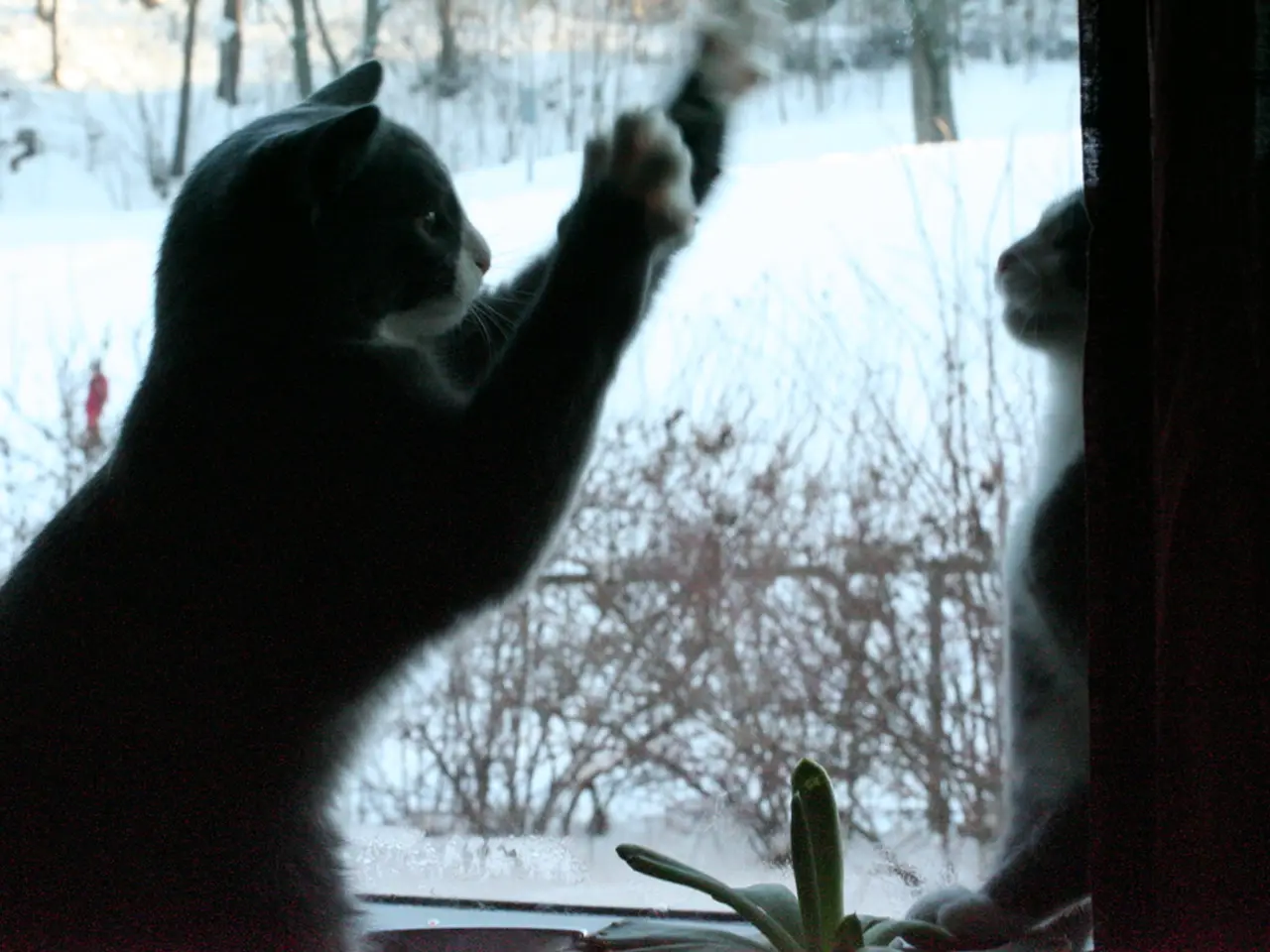Cats can feel the cold, especially during winter. The question is, what temperature is considered too cold for them?
As the cold weather sets in, outdoor cats need extra care to stay warm and comfortable. Here's a guide on how cats manage to stay warm during winter and the steps you can take to help them.
Outdoor cats rely on their thick fur coats, which grow denser in cold weather, to insulate their bodies and trap warm air close to the skin. They also instinctively seek out warm, sheltered spots to curl up in, reducing their surface area exposed to the cold.
Finding cozy hiding spots is essential for outdoor cats, and they often gravitate towards small, enclosed spaces such as nooks, cracks, or sheltered areas. Curling into a ball further helps conserve heat.
Well-insulated shelters made by humans or found naturally are a great benefit to outdoor or feral cats. These shelters are best when they are just large enough for a cat to turn around in, keeping the body heat trapped inside. They are often raised off the ground to avoid moisture and lined with straw, an excellent insulator that keeps moisture out and traps warmth.
Shelters that block wind, rain, and snow help maintain a warmer microenvironment inside by preventing cold drafts. It's important to ensure that these shelters are weatherproofed to provide a warm and dry space for the cats.
In addition to their natural adaptations, outdoor cats need extra calories to generate enough body heat. They often increase their food intake or rely on supplemental feeding stations set up by caretakers. Fresh water needs to be available, preferably in insulated bowls to prevent freezing.
Cats may show signs of being cold, such as curling into a ball, having cold extremities, hunching and puffing, seeking out warm places, or gravitating towards sunny spots and warm laps.
Self-warming cat beds are available, made from an insulating blend of polyester that warms with a cat's body heat. These beds can help keep cats warm during the winter. Heated pet beds are another option, using low wattage and great for senior cats or those with mobility issues or joint pain.
It's recommended to leave the heating on when possible, but if not, the tips above will help keep a cat warm. Elevating a cat's bed can make it feel warmer as heat rises. Interactive cat toys can help keep a cat warm by engaging them in play.
Wearing a sweater or coat can help keep a cat warm, but positive reinforcement may be needed. Feeding a cat a little more during cold weather can help supplement the extra calories they burn to stay warm.
Kittens, hairless cats, and very short-haired breeds may struggle to maintain their body heat and would benefit from heated pet beds or warm shelter. Adult cats prefer a temperature of 25°C (77°F), but they're comfortable anywhere from 15 to 20°C (59 to 68°F). Kittens should be kept at 25°C (77°F) and given blankets and pet-safe heat sources to stay warm.
Obese cats are better insulated against the cold, but they move slower, which can cause problems if they're prone to wandering far from home. Outdoor cats are at greater risk of hypothermia and frostbite if the temperature gets too low.
Dr. Joanna Woodnutt, a veterinarian who specializes in companion animal medicine, dermatology, behavior, and nutrition, emphasizes the importance of providing a cozy blanket for cats. Providing a warm blanket can help keep a cat warm, and it can be warmed in the dryer before use.
Hannah, another veterinarian with a passion for soft tissue surgery, ultrasound, and canine and feline dentistry, reminds us that the temperature tolerance of cats varies based on factors like coat type, weight, and health. It's important to monitor your cat's health during cold weather and seek veterinary advice if you have any concerns.
By following these tips, you can help ensure that your outdoor cat stays warm and comfortable during the cold winter months.
- Outdoor cats rely on their thick fur coats to insulate their bodies and trap warm air close to the skin, aiding in their survival during cold weather.
- Feral cats appreciate well-insulated shelters made by humans or found naturally, as they help conserve body heat and provide a warm, dry space.
- Fresh food and water are essential for outdoor cats during winter as they need extra calories to generate enough body heat.
- In addition to their natural adaptations, outdoor cats may benefit from self-warming cat beds or heated pet beds during the cold season.
- Cats' behavior, such as curling into a ball, having cold extremities, or seeking out warm places, can indicate that they are feeling cold.
- Toys that engage cats in play help keep them warm and active during the winter months.
- Short-haired, hairless cats, and kittens might struggle to maintain body heat in cold weather and could benefit from heated pet beds or warm shelter.
- Obese cats are better insulated against the cold, but their reduced mobility could increase the risk of them wandering far from home.
- Veterinarians stress the significance of providing a cozy blanket for cats and warming it in the dryer before use to help keep them warm during cold weather.
- Monitoring the health of your outdoor cat during cold weather and seeking veterinary advice if necessary is crucial for their overall well-being and fitness-and-exercise.




